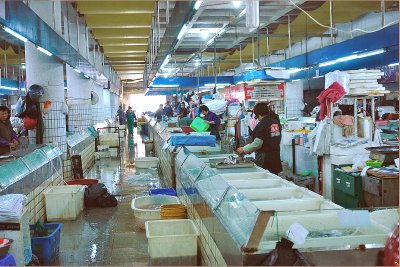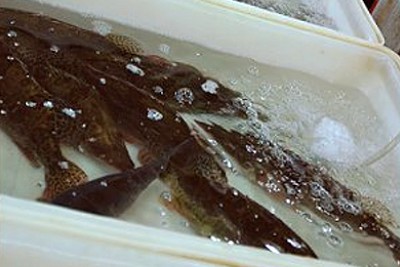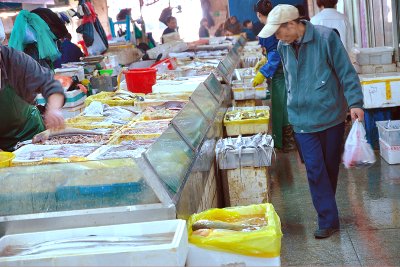by Kun Cleo Zhang - photos by Wulong Zhang
 When I first came to Europe, I found it is different how European people purchase and eat fish compared to Chinese. For me, this difference is interesting and I started to pay attention on the ideas behind the two different behaviours.
When I first came to Europe, I found it is different how European people purchase and eat fish compared to Chinese. For me, this difference is interesting and I started to pay attention on the ideas behind the two different behaviours.
In my home town, Jiaxing, Zhejiang, in China, families are used to go and buy live fish at the market. There, fishmongers keep fish in basins and plastic boxes and customers can choose which ones they want.
Then, people can either ask the fishmongers to kill and clean the fish or bring the fish back home and dress it by themselves.
 Even for the frozen sea fish, the fishmongers will keep the whole body of the fish on ice so that customers can have a look and select. Similarly, in Chinese restaurants, all kinds of live fish are kept in tanks. Most of the time, customers can choose, which particular fish they want for the dish. And when people eat, they eat the whole fish, including the head, tail, and fins.
Even for the frozen sea fish, the fishmongers will keep the whole body of the fish on ice so that customers can have a look and select. Similarly, in Chinese restaurants, all kinds of live fish are kept in tanks. Most of the time, customers can choose, which particular fish they want for the dish. And when people eat, they eat the whole fish, including the head, tail, and fins.
However in Europe, the majority of people go to supermarkets to buy fish which is already filleted and presented in portions in a refrigerator. Both in common families and restaurants, you only see filleted fish served on the dinner table instead of the whole fish.
I think it is very difficult for people without any fishing background to tell whether a fillet is from a baby fish or an adult fish. If all fish on the shelves are fillets, how can common people tell whether what they eat was from an adult?
From this perspective, I think that to buy live fish at fish markets is a more sustainable way, because people can see and tell immediately with their own eyes whether they are baby fish or not.
 However, I found that fish markets make people feel guiltier later. More European people regard buying or ordering live fish as “point ‘n’ kill”, which means that the customer choose a living fish, to see that fish killed. And this makes people feel terrible, somehow like a murder. From this perspective, fish fillet seem to make people enjoy their meals more.
However, I found that fish markets make people feel guiltier later. More European people regard buying or ordering live fish as “point ‘n’ kill”, which means that the customer choose a living fish, to see that fish killed. And this makes people feel terrible, somehow like a murder. From this perspective, fish fillet seem to make people enjoy their meals more.
I cannot say which of the two behaviours is better than the other one, because every country has its own fish eating culture and there is no such an answer “right” or “wrong”. But I believe that our goal that the sea and marine animals develop in a more sustainable way is the same.








